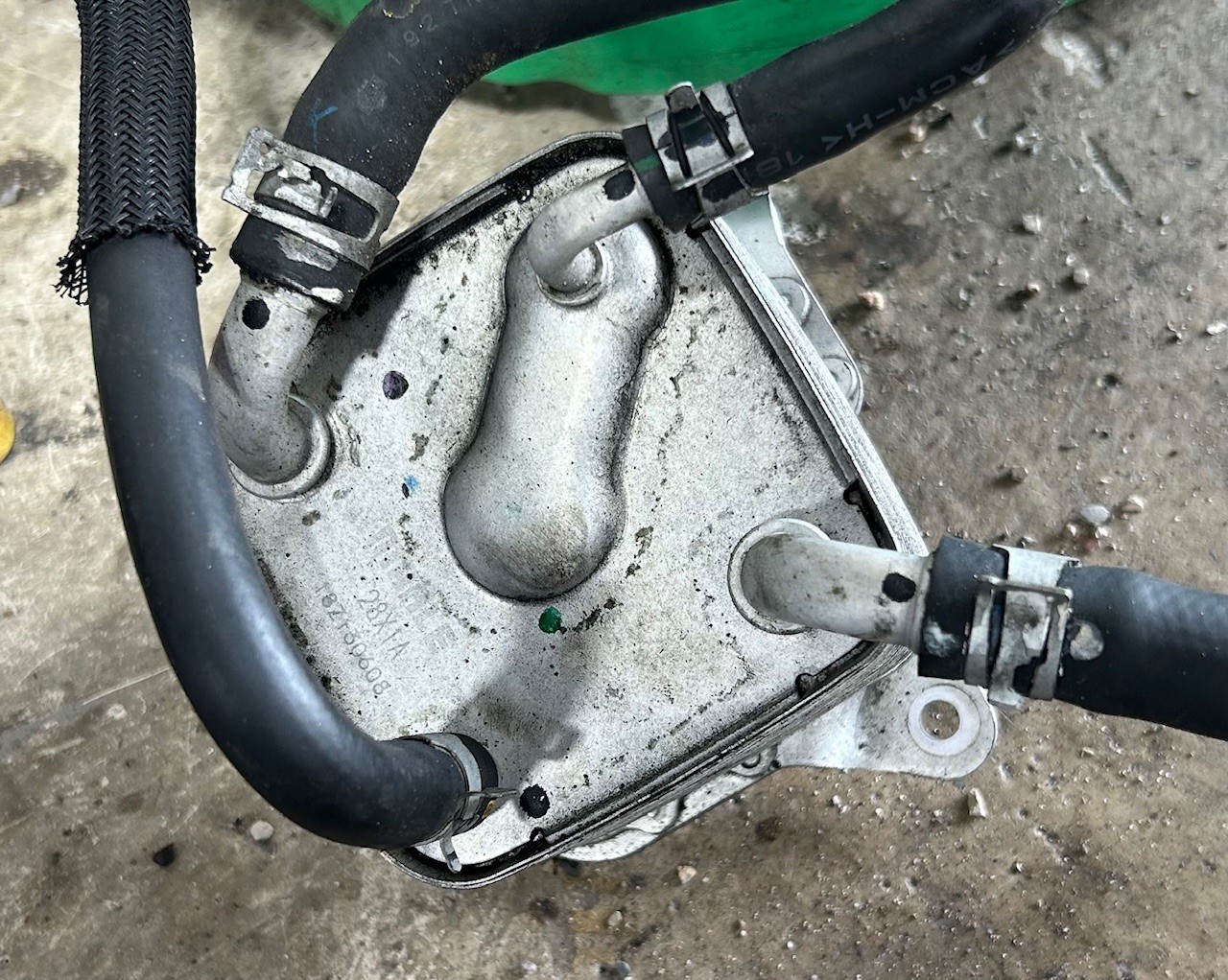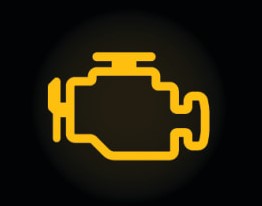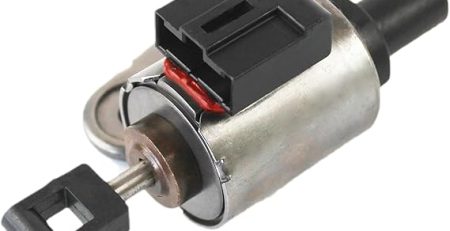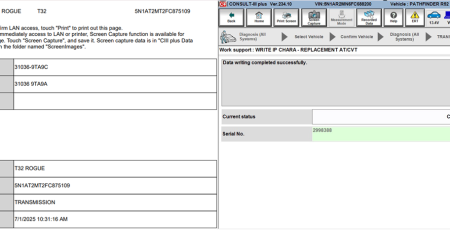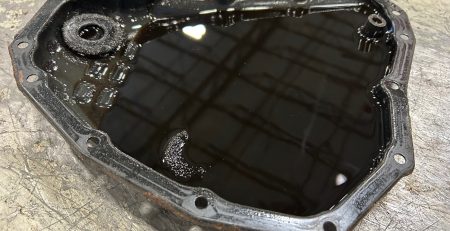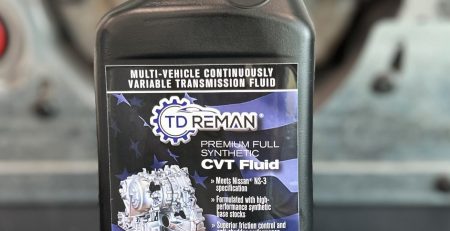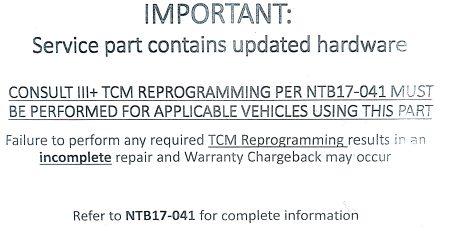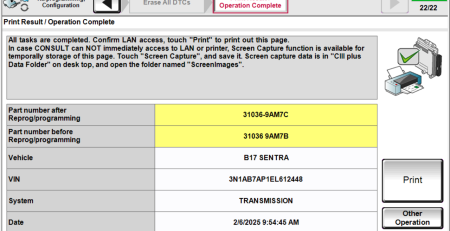How to Properly Clean CVT Transmission Fluid Coolers: A Mechanic’s Guide
How to Properly Clean CVT Transmission Fluid Coolers: A Mechanic’s Guide
When replacing your Nissan TD REMAN Continuously Variable Transmissions (CVT), it’s essential to clean the CVT transmission fluid coolers. Neglecting to do so can result in contamination of the newly installed CVT Transmission. This guide provides the step-by-step procedure for flushing the radiator-based fluid cooler and external auxiliary cooler.
Why Cleaning CVT Fluid Coolers is Critical
Over time, metal debris and friction materials can accumulate in the CVT’s cooling system, including the radiator, hoses, bypass valve, or external fluid cooler. If left uncleaned, this debris can contaminate the new TD REMAN transmission and cause severe damage by blocking or restricting fluid flow. Therefore, it is crucial to flush the fluid coolers to ensure the longevity and performance of the newly replaced components. More importantly, failure to do so can also void your warranty.
Step-by-Step Service Procedure
- Radiator-Based CVT Transmission Fluid Cooler Cleaning
Step 1:
Place the vehicle on a lift to ensure easy access.
Step 2:
Position an oil drain pan under the CVT fluid cooler.
Step 3:
Unbolt and disconnect the external CVT fluid cooler bypass valve from the cooler.
Step 4:
Place another oil drain pan under the CVT warmer.
Step 5:
Disconnect the CVT fluid cooler inlet and outlet rubber hoses from the CVT fluid warmer.
Step 6:
Allow any remaining transmission fluid to drain into the oil pan. These hoses will be flushed in both directions.
Flushing Procedure:
Step 7:
Insert the extension adapter hose from a can of Transmission Cooler Cleaner into one of the disconnected hoses.
Step 8:
Flush the CVT fluid cooler and hoses:
- Hold the hose and cleaner as high as possible. Note* Certain units like Pathfinders, require the bypass valve to be blocked.
- Spray the cleaner continuously into the cooler inlet hose until fluid exits from the opposite hose for 5 seconds.
Step 10:
Slide a 16mm hose over the flushed CVT fluid cooler hose and insert the tip of an air gun into the 16mm hose.
Step 11:
Blow compressed air, regulated to 70–130 PSI, through the CVT fluid cooler hose for 10 seconds to expel any remaining fluid.
Step 12:
Repeat steps 8–11 once more, then reverse the flushing direction, and repeat the process twice.
Step 13:
Reassemble the CVT cooler hoses with new spring clamps. Refer to the ESM (section TM – Transaxle & Transmission) for proper hose alignment.
- Flushing the External Auxiliary CVT Transmission Fluid Cooler (Pathfinder Only)
Step 1:
Remove the external auxiliary CVT fluid cooler. Refer to the ESM for instructions.
Step 2:
Discard the O-rings from the auxiliary cooler. Add part number for reference as we do not send these O-rings with our units.
Step 3:
Install a 120mm hose on the cooler’s inlet and a 150mm hose on the outlet, with the opposite end placed in a container to catch used fluid.
Step 4:
Flush the auxiliary cooler by inserting the adapter hose from the cleaner into the inlet and spraying one full can of Transmission Cooler Cleaner.
Step 5:
Blow compressed air (70–130 PSI) through the auxiliary cooler to expel remaining fluid.
Step 6:
Flush approximately 2 liters of NS-3 fluid through the cooler using a suction gun, then allow it to drain.
Step 7:
Repeat the air-blowing process to ensure all remaining fluid is removed.
Step 8:
Reassemble the auxiliary cooler and bypass valve using new O-rings, following the instructions in the ESM.
Key Safety Notes
- Wear safety glasses and rubber gloves.
- Ensure the area is well-ventilated.
- Avoid skin and eye contact with the cleaner.
- Do not inhale vapors or mist.
Conclusion
By following these detailed steps, you can ensure the proper cleaning of CVT transmission fluid for radiator-based cooler models. Cleaning the coolers helps prevent contamination, blockage, and damage to newly installed TD REMAN CVT transmission, ensuring the vehicle operates smoothly post-service and more importantly your warranty.
Ensure you’re always working with the latest service manuals for any updates to procedures or vehicle-specific instructions.

